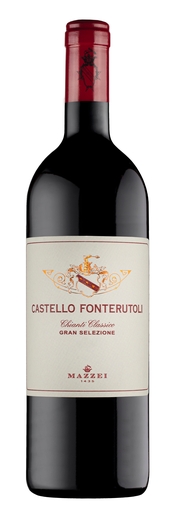 years of additional aging. The Gran Selezione wines are required to come from a single vineyard or estate owned by the producer and aged a minimum of 30 months — six months more than Riserva — before release.
years of additional aging. The Gran Selezione wines are required to come from a single vineyard or estate owned by the producer and aged a minimum of 30 months — six months more than Riserva — before release.
The new category was controversial. Reactions involved confusion at best, and some critics expressed disapproval for what seemed to be an all too obvious marketing scheme. But as the term began appearing on wine labels, usually on a producer’s finest and most expensive Chianti Classico, it gained traction as a quality indication.
Back in 2014, I had a discussion with a leader of the Gran Selezione camp who acknowledged the credibility risks embodied in the new category. But, he said, because each wine by definition would come from a specific site, some producers hoped the category might be a gateway to the larger issue of recognition for communal differences in Chianti Classico.
Theoretically, yes, and that is an issue that’s Important to me. I have long argued that Chianti Classico will not get the respect it deserves until we recognize the stylistic differences that exist from commune to commune — just as we recognize the differences in the wines from the main communes of the Médoc in Bordeaux.
Now, Castello di Fonterutoli has brought the commune concept to life by releasing three Chianti Classico Gran Selezione wines from the 2017 vintage that each represent not only a certain vineyard but also a specific commune of Chianti Classico. Fonterutoli is an historic property that has been in the hands of the Mazzei family for 26 generations, since 1435.
2017 Badiola Chianti Classico Gran Selezione ($99) hails from the commune of Radda. Radda is known for its high elevation sites, and the wines therefore are often among the most tensile of the region’s wines. (The Badiola site itself runs from 470 to 550 meters elevation.) The 2017 Badiola is lighter, logically, than the other three wines, more delineated and more “vertical,” as Giovanni Mazzei described it in a recent Zoom tasting with wine writers. Its aromas and flavors suggest red fruits above all, but also some black cherry, herbal and mineral notes, all very fresh and vibrant. The wine is medium-bodied with excellent depth, freshness and concentration, and a medium amount of tannin that will resolve in time. Clarity and precision are two of its key characteristics.
The Fonterutoli 2017 “Vicoregio 36” ($85) comes from a Mazzei-owned vineyard called Vico Regio in Chianti Classico’s most southerly district, Castelnuovo Berardegna, typically a warmer site producing softer, richer, fuller-bodied wines. This vineyard sits on a plateau at 350 meters elevation. This vineyard has long been a site for the family’s experimentation with clonal materials and is home to 36 biotypes of Sangiovese, on 36 plots. The wine is made from 36 lots of wine that are vinified separately.
This wine is a bit of an enigma to me, because it seems too complex to pin down. All in good time. The aroma expresses herbal notes (mint, anise), tart red fruits, and some piney notes. I peg the wine as fullish-bodied, with surprisingly ripe fruit flavors considering the delicacy of the nose. The wine is bright in flavor and even juicy. And yet it is taut and tight at this point, because its flavor and structure are a bit disjointed now and need time to integrate. For this commune, it is a very finessed wine, not at all the ripe, amorphous style I recall from this area in the bad old days.
The third 2017 Gran Selezione of Fonterutoli is called Castello di Fonterutoli ($74) from the winery’s home site in the commune of Castellina, at 420 to 510 meters elevation. I must admit that I have always named Castellina as my favorite commune of the region, although I find it difficult to explain why. The wines from this area to me embody is What Chianti Classico Is — even as I argue that the region has significant regional variation. This wine is riper than the Badiola from Radda and rounder than the Vicoregio from Castelnuovo Berardegna. On the aroma, the wine suggests ripe cherry, fresh herbs and a dusty note of earthiness that I consider typical of Chianti Classico. On the palate, the red fruits expand from cherry into raspberry and strawberry, and some vanilla joins the picture. But this wine has dimensions beyond flavor or structure — beyond its full body, high-ish alcohol, supple texture and its special balance of pure, ripe fruit and grainy tannins that meet each other one on one. I’ll call the wine “complete,” “whole.” Something in it shines from within.
All these wines are made entirely from the Sangiovese grape. The wines each age in 500 liter barrels of which only 30 percent are new for the Badiola, and 50 per cent for the other two wines. Because the wines are young, you can find the oak in the wine’s taste, but none of them is over-oaked nor particularly extracted in style — two generalizations often levelled against Gran Selezione wines. Because they are so young, and youthful, they promise many years of good drinking ahead.
2017 Castello di Fonterutoli Badiolá, 93 Points
2017 Castello di Fonterutoli Vicoregio 36, 92
2017 Castello di Fonterutoli, 94
